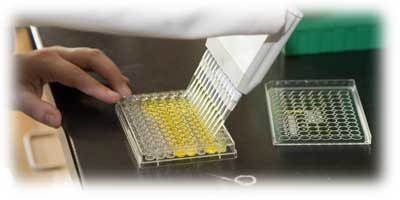 |
|||||||||||||||||
|
|||||||||||||||||
|
Research
Current areas of research in the Joung lab include: Engineering “designer” zinc fingers with novel DNA-binding specificities The Joung lab is a founding member of the Zinc Finger Consortium (http://www.zincfingers.org). As part of this collaborative effort, we have developed robust selection and design methods for rapidly engineering synthetic zinc finger domains with novel, defined DNA-binding specificities. Application of zinc finger nucleases for targeted, highly efficient genome manipulation Zinc finger nucleases (ZFNs), consisting of designer zinc fingers fused to a non-specific endonuclease domain, can be used to introduce targeted DNA alterations with high efficiency at specific genomic loci in mammalian, plant, zebrafish, or Drosophila cells. These alterations result from repair of ZFN-induced double-stranded DNA breaks by normal cellular repair processes (non-homologous end-joining or homologous recombination). Altering cellular phenotypes using combinatorial zinc finger transcription factor libraries We have recently constructed large combinatorial libraries of zinc finger domains which can be fused to various transcriptional regulatory domains (e.g., activation or repression domains). |
|||||||||||||||||
|
|
|||||||||||||||||
| Copyright © 2006-2012 The Massachusetts General Hospital | |||

